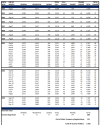The Decline of the Appraisal Industry: An Unsustainable Future
Once a cornerstone of real estate transactions, the appraisal industry is now facing an existential crisis. A closer look reveals a troubling disparity between the compensation appraisers receive and the escalating demands placed upon them. This unsustainable imbalance is threatening the viability of the profession.
Stagnant Pay Amid Rising Costs
When I started in the appraisal business in 2002, a standard appraisal cost between $325 and $400. Fast forward to 2024, and the fees I receive from appraisal management companies (AMCs) range from $400 to $450, with $500 being a rare high. On occasion, AMCs even try to pass off $350 fees to this day. This amounts to an average pay increase of just 17% over 22 years. In stark contrast, the cumulative cost of living has risen approximately 74.27% over the same period, according to the Consumer Price Index (CPI). Using the CPI inflation calculator, $350 in 2002 equates to $613.80 today. Yet, the average fee appraisers receive from an AMC for an appraisal today is around $425, a far cry from what is needed to keep pace with inflation.
This stagnation in pay stands in sharp contrast to the steadily increasing fees charged to borrowers. The disparity between what borrowers pay and what appraisers earn highlights systemic issues in how the
appraisal profession is valued.
Increased Workload and Liability
While pay has stagnated, the workload and liability for appraisers have grown exponentially. Engagement letters now come with a never-expanding list of requirements. Additional policies, such as revised Reconsideration of Value (ROV) procedures, introduce more time-consuming steps without corresponding increases in compensation.
Moreover, scrutiny on appraisers has intensified significantly with the use of lender Automated Valuation Models (AVMs), the Uniform Appraisal Dataset (UAD), and soon, lender-built AI models. Appraisers face greater potential for being labeled biased, increasing the risk of professional liability. They are expected to address every conceivable factor influencing a property’s value for fees appropriate for 20 years ago. To top it off, they must complete these tasks within 48 hours or risk being marked late and seeing their rating with the AMC decline.
A Comparison with Other Trades and Professions
The disparity in pay and expectations becomes even more apparent when compared to other skilled trades:
- My neighbor recently hired a plumber to replace two shut-off valves under a pedestal sink. The fee was $550 for less than 30 minutes of work.
- I had new flooring installed, which took one worker two days. The LABOR cost was $2,350, the most competitive of three quotes. (This was in December 2024.)
- Painting a vacant 950 sq. ft. home with two colors (white ceilings and near-white walls) cost $2,450 - excluding baseboards or trim. I supplied the paint, and two painters completed the job in two 8 hour days. (This was also in December 2024.)
- My sister-in-law wedding photographer charges $3,500–$5,000 per wedding. An 8-10 hour shift, with image editing outsourced to an editor in Latvia for cents on the dollar. This doesn’t include additional charges for wedding books, framed images, etc. A job paying upwards of $100k a year, requiring far far fewer hours than an appraiser making an equivalent wage.
In contrast, appraisers undergo hundreds of hours of classwork, pass rigorous tests, and complete thousands of hours of apprenticeship training. Once licensed, appraisers drive 30–40minutes one way, measure a home, complete a detailed interior and exterior analysis of the property, scour MLS for data collection, research each comparable, analyze market conditions, and reconcile to 1, 2, or 3 approaches to value. This labor-intensive process, coupled with significant liability, is conducted for around $400, often with a 2–4 week wait to receive payment.
The Unsustainable Model
The appraisal industry operates on a model that undervalues the expertise, time, and the liability involved in the profession. While other trades or professions command higher fees for equally and often less complex tasks, appraisers face mounting demands and stagnant compensation. This disconnect is driving seasoned professionals out of the industry and discouraging new entrants. Without systemic changes to address pay disparities and reduce administrative burdens, the appraisal industry will continue to decline, leaving a critical gap in the real estate process.
The Role of AI in the Future of Appraisal
As the appraisal industry struggles, AI is poised to take on a growing role in the valuation process. Property inspectors may soon upload data, including detailed notes and photographs, to AI-driven models. These models could analyze physical conditions, anticipate market reactions, and generate supportable adjustments based on
vast data sets already being compiled. While AI may offer efficiencies, it is unlikely to replicate the nuanced judgment of a licensed appraiser --
today. In the future, however, it will. Since AI cannot form an opinion of value, its outputs may ultimately produce a most probable price or a price range, with lenders adjusting loan terms based on the provided range.
The growing reliance on AI will more than likely diminish the role of human appraisers, reducing the demand for traditional appraisals. It is probable and my opinion that Fannie Mae and Freddie Mac will embrace replacing human appraisers as soon as it is feasible. Given the current fee structure, which lags behind the cost of living and falls far short of other professions, reducing new entries into the field, this shift may occur sooner than expected and could become a necessity for the mortgage market. After all, who else is gonna do it?
Yuanyin





